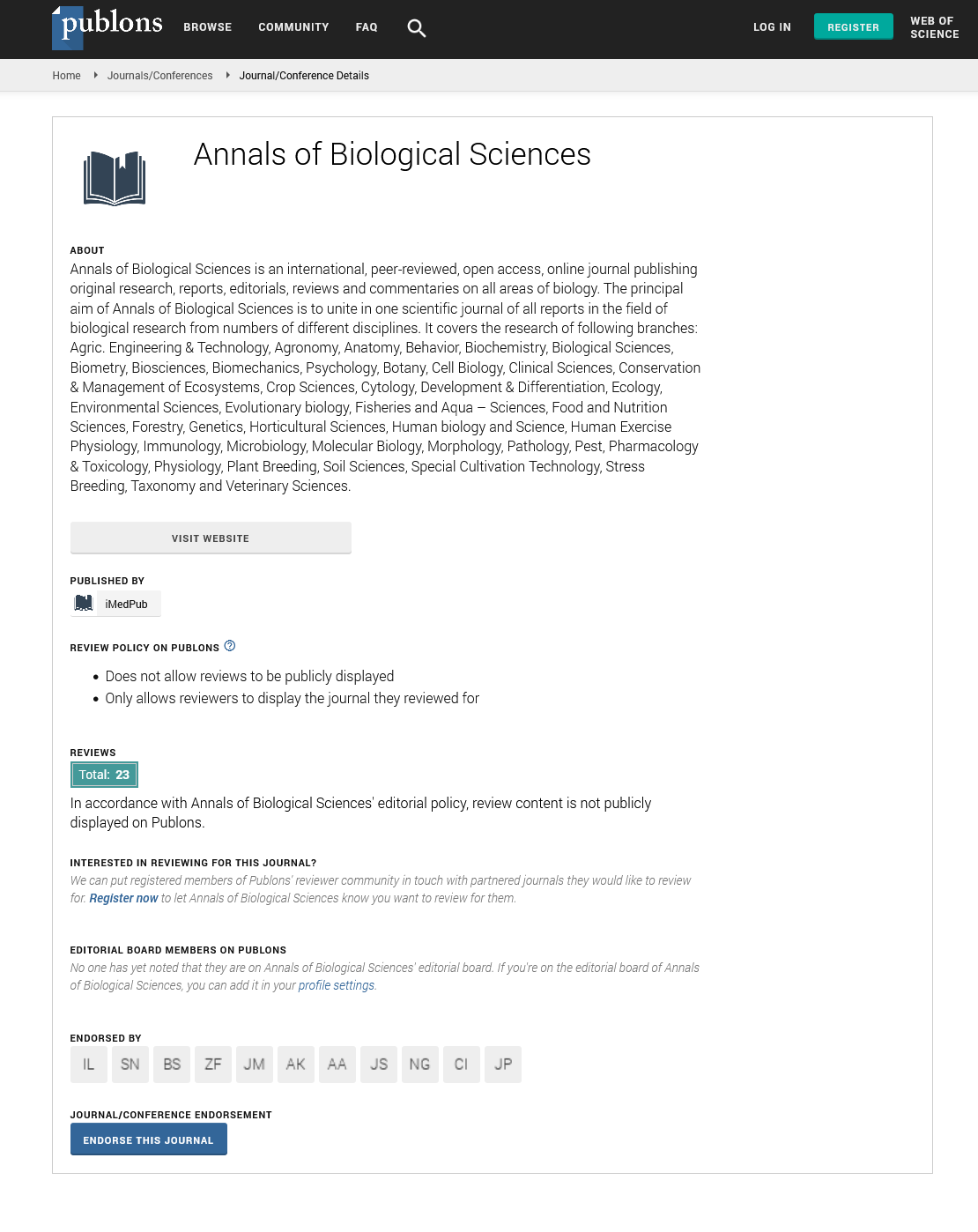ISSN : 2348-1927
Annals of Biological Sciences
Abstract
The Response of the Green Toad Bufo viridis Larvae to Deep Water Ponds, Food Levels, Density, and Interspecific Competition
Background: Bufo viridis toad is a common species that inhabits a wide variety of habitats. Adaptive phenotypic plasticity allows tadpoles of B. viridis to exert fine control over the rate of metamorphosis in response to changes in their larval habitat. This experiment in a controlled laboratory setting provides important insights in both the degree of plasticity and the proximal environmental cues operating in the response of green toad tadpoles to pond drying, food level and competition in the natural environment.
Aim: It is an attempt to give obvious guidelines to factors needed to conserve, protect, restore and enhance the Bufo viridis species in its habitat.
Results: The current results do not allow defining the precise environmental cue(s) that tadpoles use to respond to a desiccating habitat. Nevertheless, they do allow defining several variables as being necessary for the developmental response (e.g., physical
interactions among tadpoles and resource limitation). It was concluded that the timing of metamorphosis and size at metamorphosis
were highly affected by pond duration. The effects of pond desiccation are reflected by shorter developmental duration and smaller size
at metamorphosis because of increased crowding in the shallow tanks than tadpoles in the deep tanks. In all treatments, B. viridis raised
on high food supplements grew faster than those raised on low food supplements or high population density. In the tanks with decreased
water and food levels, lead the tadpoles to accelerate the development and metamorphose earlier than tadpoles in higher food and
water levels. The obtained data revealed that B. viridis tadpoles grew faster under conditions of high population density. Actual density
had limited but significant effects on tadpole size and development. It also suggests that density regulation acting on the tadpole stage
was less and of short-term importance than abiotic factors. The presence of B. regularis tadpoles as a competitor depressed B. viridis
growth, particularly under low food supplements.
Conclusion: Finally, documenting the recent results of this study, Bufo viridis breed in temporary ponds and exhibited plasticity in developmental duration and growth rate in response to a changing in water level, and this response varied in direct relation to the magnitude of the environmental signal.
Author(s): Gamal M. Bekhet*, Hussein K. Hussein, Samir I. Dekinesh, Heba M. Abdou, Samar S. Sebaie
Abstract | Full-Text | PDF
Share This Article
Google Scholar citation report
Citations : 406
Annals of Biological Sciences received 406 citations as per Google Scholar report
Annals of Biological Sciences peer review process verified at publons
Abstracted/Indexed in
- Google Scholar
- China National Knowledge Infrastructure (CNKI)
- WorldCat
- Publons
- ROAD
- Secret Search Engine Labs
Open Access Journals
- Aquaculture & Veterinary Science
- Chemistry & Chemical Sciences
- Clinical Sciences
- Engineering
- General Science
- Genetics & Molecular Biology
- Health Care & Nursing
- Immunology & Microbiology
- Materials Science
- Mathematics & Physics
- Medical Sciences
- Neurology & Psychiatry
- Oncology & Cancer Science
- Pharmaceutical Sciences
